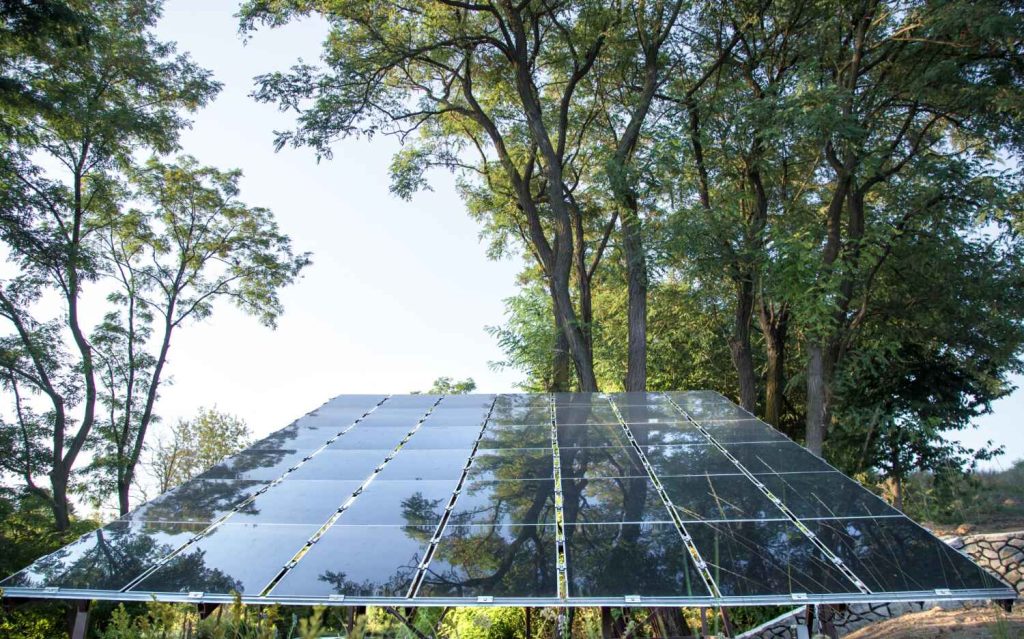As the world shifts towards renewable energy, innovations in solar technology continue to emerge, offering exciting possibilities for integrating solar power into our daily lives. One such innovation is transparent solar panels. These advanced solar panels promise to transform windows, smartphone screens, and even entire building facades into sources of clean energy. But how exactly do transparent solar panels work? Let’s dive into the science and potential of this groundbreaking technology.
The Basics of Transparent Solar Panels
Traditional solar panels are designed to absorb sunlight and convert it into electricity. They achieve this through the use of photovoltaic (PV) cells, typically made from silicon, which generate an electric current when exposed to light. In contrast, transparent solar panels are engineered to allow light to pass through them while still capturing and converting some of them into usable energy. This unique capability opens up a world of new applications for solar technology.
The Science Behind Transparent Solar Panels
The key to transparent solar panels lies in their ability to selectively harvest the non-visible portions of the light spectrum, such as ultraviolet (UV) and infrared (IR) light while allowing visible light to pass through. This is achieved through the use of specialized materials and technologies:
Organic Photovoltaic (OPV) Cells
One approach to creating transparent solar panels involves organic photovoltaic (OPV) cells. These cells use organic molecules to absorb light and generate electricity. OPV cells can be engineered to selectively absorb UV and IR light, leaving visible light unimpeded. The organic materials used in these cells are typically lightweight and flexible, making them suitable for a variety of applications.
Transparent Luminescent Solar Concentrators (TLSC)
Another promising technology is the transparent luminescent solar concentrator (TLSC). TLSCs use organic salts that absorb UV and IR light and re-emit it at different wavelengths. This re-emitted light is directed towards the edges of the panel, where traditional solar cells convert it into electricity. The transparent nature of the luminescent materials allows visible light to pass through, making TLSCs nearly invisible to the human eye.
Perovskite Solar Cells
Perovskite solar cells are another cutting-edge technology being explored for transparent solar panels. Perovskites are a class of materials known for their excellent light-absorbing properties and high efficiency in converting light to electricity. By carefully tuning the composition of perovskite materials, researchers can create semi-transparent cells, selectively absorbing non-visible light while allowing visible light to pass through.
Applications of Transparent Solar Panels
The potential applications of transparent panels are vast and varied, offering exciting possibilities for integrating renewable energy into everyday life:
Building Integrated Photovoltaics (BIPV)
Transparent solar panels can be seamlessly integrated into the windows and facades of buildings, turning entire structures into solar energy generators. This concept, known as building integrated photovoltaics (BIPV), allows buildings to generate electricity while maintaining aesthetic appeal and functionality. BIPV can significantly reduce a building’s carbon footprint and energy costs.
Consumer Electronics
Imagine smartphones, tablets, and laptops with screens that double as solar panels. Transparent panels can be used to power these devices, extending battery life and reducing the need for frequent charging. This innovation could revolutionize the way we interact with and power our electronics.
Automotive Industry
The automotive industry is also exploring the use of transparent panels. Solar windows and sunroofs can provide additional power to electric vehicles, increasing their range and reducing reliance on external charging sources. This technology can also be used to power auxiliary systems in conventional vehicles, improving overall energy efficiency.
Challenges and Future Prospects
While the potential of transparent solar panels is immense, there are still challenges to overcome. Achieving high efficiency while maintaining transparency is a significant technical hurdle. Additionally, the long-term durability and cost-effectiveness of these panels need to be addressed before they can be widely adopted.
However, ongoing research and development are steadily advancing the field. As technologies improve and economies of scale are achieved.
Conclusion
Transparent solar panels represent a remarkable leap forward in solar technology, offering a versatile and aesthetically pleasing way to harness solar energy. By capturing non-visible light while allowing visible light to pass through, these panels can be integrated into a wide range of applications, from building facades to electronic devices and vehicles.
As we continue to innovate and push the boundaries of renewable energy, transparent solar panels will play a crucial role in our transition to a more sustainable future. With companies like Redington Solar at the forefront of these advancements, the day when our windows and screens power our lives may not be far off.





